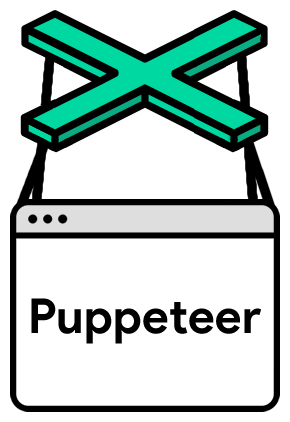Rendering Method
- puppeteer:
puppeteeruses a headless Chrome browser to render web pages and capture screenshots. It provides a complete browser environment, allowing for accurate rendering of complex layouts, animations, and dynamic content, making it highly reliable for capturing images and PDFs. - html2canvas:
html2canvastakes a screenshot of a specified DOM element or the entire page by rendering it in a canvas. It captures the visual representation of the element, including styles, images, and text, providing a faithful representation of the original layout. - dom-to-image:
dom-to-imagerenders DOM elements and converts them into images using the Canvas API. It supports rendering specific elements, including their styles, backgrounds, and text, making it suitable for creating images from selected parts of a web page.
Complexity
- puppeteer:
puppeteeris more complex due to its nature as a full browser automation tool. It requires knowledge of asynchronous programming and browser contexts, but it offers extensive capabilities for automation, testing, and rendering. - html2canvas:
html2canvasis relatively straightforward but may require some configuration to handle complex layouts, cross-origin images, and certain CSS properties. It is well-documented and provides a clear API for developers. - dom-to-image:
dom-to-imageis simple to use and requires minimal setup. It is lightweight and does not depend on external libraries, making it easy to integrate into existing projects without adding significant complexity.
Cross-Origin Support
- puppeteer:
puppeteerhandles cross-origin content seamlessly since it operates within a full browser environment. It can interact with and render any content, regardless of its origin, making it the most reliable option for capturing complex pages with mixed-origin resources. - html2canvas:
html2canvasalso requires CORS-enabled images to render them correctly. It handles cross-origin content better thandom-to-image, but developers must ensure that the images and resources are served with the correct CORS headers to avoid security restrictions. - dom-to-image:
dom-to-imagehas limited support for cross-origin images and elements. To render cross-origin content, the images must have the appropriate CORS headers set. Otherwise, they will be rendered as blank or transparent.
Customization
- puppeteer:
puppeteerprovides extensive customization capabilities, allowing developers to control every aspect of the rendering process, including viewport size, device emulation, and script execution. It is highly configurable and supports advanced features like PDF generation, making it the most versatile option. - html2canvas:
html2canvasoffers more customization options, including the ability to specify the rendering area, handle shadows, and control the output scale. It provides a more flexible API for developers to tweak the rendering process as needed. - dom-to-image:
dom-to-imageallows for some customization, such as setting the background color, image quality, and specifying which elements to render. However, it is limited in terms of advanced customization features.
Code Example
- puppeteer:
puppeteerExampleconst puppeteer = require('puppeteer'); (async () => { const browser = await puppeteer.launch(); const page = await browser.newPage(); await page.goto('https://example.com'); await page.screenshot({ path: 'screenshot.png' }); await browser.close(); })(); - html2canvas:
html2canvasExampleimport html2canvas from 'html2canvas'; const element = document.getElementById('my-element'); html2canvas(element) .then((canvas) => { document.body.appendChild(canvas); const img = canvas.toDataURL(); console.log(img); }) .catch((error) => { console.error('Error capturing element:', error); }); - dom-to-image:
dom-to-imageExampleimport { toPng } from 'dom-to-image'; const node = document.getElementById('my-node'); toPng(node) .then((dataUrl) => { const img = new Image(); img.src = dataUrl; document.body.appendChild(img); }) .catch((error) => { console.error('Error generating image:', error); });











